“Help Me Help You.” How to Get AI Chatbots To Prompt Themselves.
Using LLMs and chatbots to improve your prompting on the fly.
Happy Thursday, cyber-sloths!
One of my resolutions this year is to help connect more dots for my readers.
I want to move from “Look, a cool AI tool!” to “Here’s a practical way to actually use it in your own life!”
To that end, I’ll kick things off by sharing two ways you can get better results out of an AI chatbot by…asking the chatbot itself.1
“Can’t I just use a copy-paste prompt?”
You could…but my aversion to this approach is well-documented:
And:
Now, simple templates for generic tasks—especially in the context of a broader workflow—can be quite useful. (See this post by
)Also, if you’ve worked out your own prompt that’s tailored to your needs, you should 100% reuse it instead of reinventing the wheel every time. (You might even want to bake the prompt into a custom GPT or add it to your Custom Instructions.)
However, I’m a proponent of learning the ropes while working with AI instead of grabbing somebody else’s off-the-shelf, cookie-cutter prompt that may or may not fit my situation.
With that mini-rant over, let’s look at the two methods and real-life examples.
This post might get cut off in some email clients. Click here to read it online.
1. The “Ask me questions” method
Here’s a story I often hear:
Someone learns about ChatGPT, signs up for an account, asks a basic question, and receives a bland, mediocre response.
Sound familiar?
At this point, the person either:
Decides that ChatGPT is a crappy, overhyped toy and gives up on it.
Decides that ChatGPT is a lot more complex than they thought and starts hunting for specialized copy-paste prompts and hacks (see above).
I get it.
To many of us, explaining exactly what we need doesn’t come naturally. Hell, we might not even know exactly what we need or have a good overview of every relevant aspect to consider.
But you know who does?
ChatGPT.
It’s a magical genie that sucked up a huge chunk of all written knowledge, so it’ll often know more than you about what’s important in any given context.
Here’s how you can tap into that: After writing your initial request, just append this short line—or something similar—at the end:
“Before you respond, please ask me any clarifying questions you need to make your reply more complete and relevant. Be as thorough as needed.”
Let’s look at a real example.
Say you’d like ChatGPT to recommend a few fun activities for kids. You might do something like this:
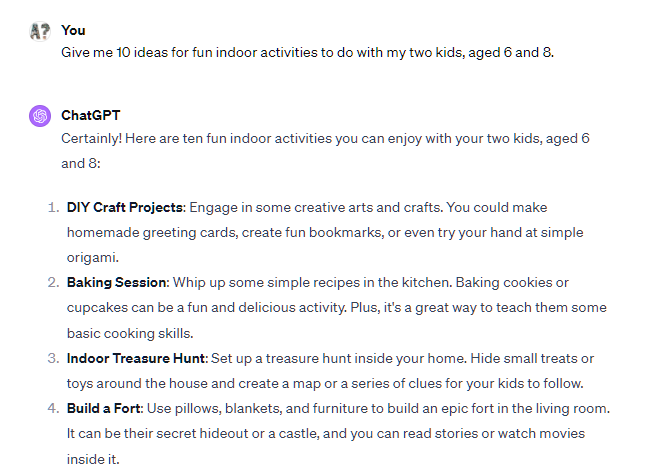
There’s nothing wrong with those suggestions. They’re just kind of…meh?
Now watch what happens with our little addition:
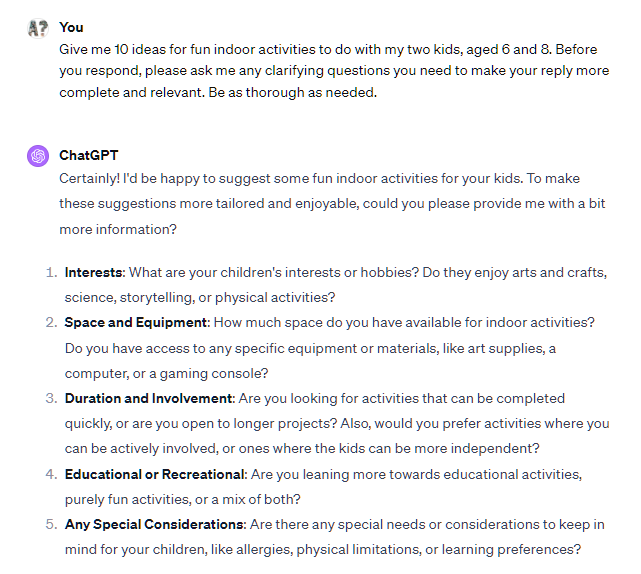
That’s a whole lot of relevant stuff I didn’t even think to share with ChatGPT on my own. Let’s see what happens when I give it more context:
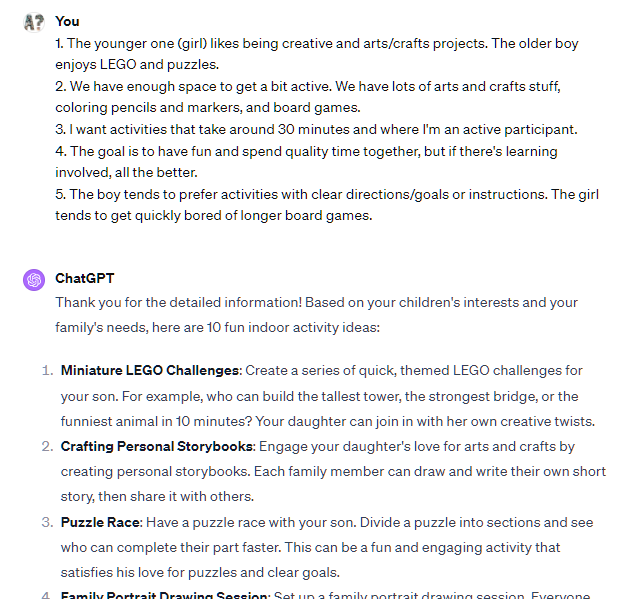
These suggestions are more nuanced and, most importantly, tailored to my situation.
The beauty of this approach is that it’s universally applicable. It works regardless of the nature of your request or how good your initial prompt is. ChatGPT will customize its follow-up questions depending on the given scenario and help you uncover any overlooked angles.
Watch ChatGPT seamlessly adjust to a request for LinkedIn ads…
…coding help…
…or inspirational quotes:
This is a versatile, “Swiss Army Knife” approach that educates you in the process and helps you uncover any blind spots.
Now let me show you another method that might be better suited for more ambitious requests.
2. The “Learn and prompt” method
Given my skeptical stance on off-the-shelf prompts, you might think I’m against learning any advanced prompting techniques, period.
I’m not.
One can get better at prompting.
There are proven ways to craft extensive, hyper-specific prompts to turn ChatGPT into an effective school tutor, marketing specialist, or just about anything else (see this article by
)Not so long ago, OpenAI even released this prompt engineering manual full of empirically tested strategies for working with large language models.
But…there’s, like, a lot of, uh, text ‘n stuff.
Who has the time to read and understand it all?
ChatGPT does.
Here’s a three-step process for making ChatGPT do the heavy lifting for you.
Step 1: Share the learning material with ChatGPT
Simply copy-paste2 the text into a new chat and ask ChatGPT to study it:
ChatGPT will review it and provide a helpful summary:
Now you’re ready for the next step.
Step 2: Ask for a prompt
You can now ask ChatGPT to craft a better prompt for your request.
In the same chat, write something along these lines:
“I want to [YOUR REQUEST]. Based on the learnings from the above guide, please craft a detailed, exhaustive prompt for me to use.”
Let’s stick to our “indoor activities for kids” example:
Great, ChatGPT just gave me a much more nuanced prompt than my original one-liner.
Time to test it!
Step 3: Use your new prompt
I recommend starting a new chat to prevent ChatGPT from getting confused about its intended role. In that new chat, paste in the prompt from Step 2:
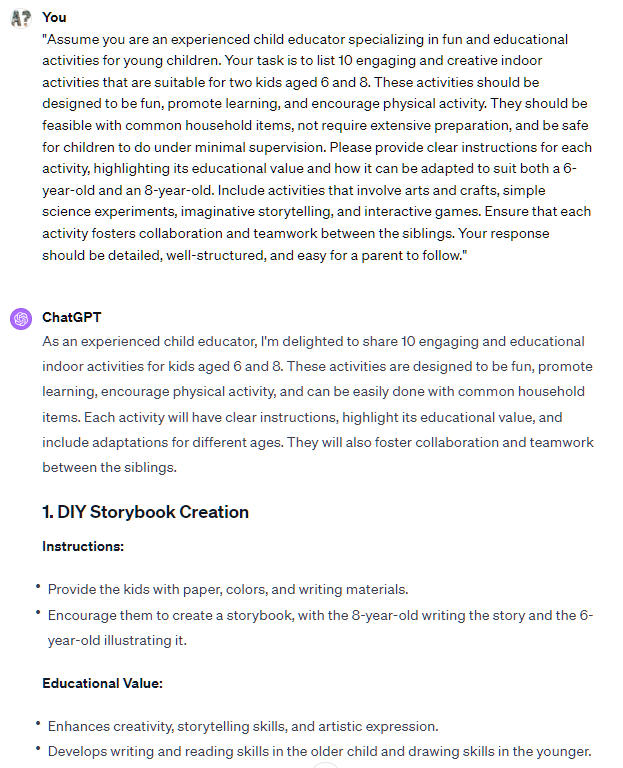
These answers are more structured and go beyond a simple list of ideas.
This approach also works for any task, with any relevant learning material.
Have you e.g. found a detailed guide to turning ChatGPT into a rocket scientist? Just share the guide with ChatGPT and let it prompt itself!
Combining the two methods
You might have noticed that our second method results in a better structure but the suggestions themselves are still quite generic.
Can you guess how we might be able to fix that?
Oh, you’ve read the heading of this section and know exactly how we’ll fix it?!
Good for you, Eagle Eye!
Yes, you can get the best of both worlds by first extracting a detailed prompt from ChatGPT (Method #2) and then appending our one-liner from Method #1.
Here’s our children’s activities example one last time.
The prompt:
The questions and answers:
The results:
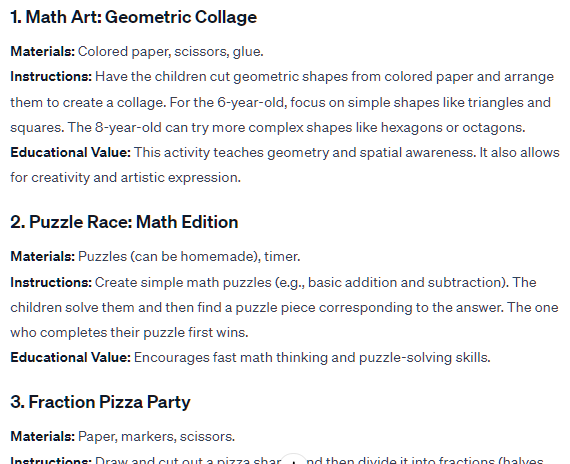
As you can see, this fusion benefits from the more extensive prompt while accounting for our specific situation at the same time.
Go ahead and test these out!
Over to you…
I hope you found this helpful.
If you get good results with these approaches, feel free to share them!
Do you know of any other AI tips that are easy to implement?
Leave a comment or shoot me an email at whytryai@substack.com.
Thanks for reading!
If you enjoy my writing, here’s how you can help:
❤️Like this post if it resonates with you.
🔗Share it to help others discover this newsletter.
🗩 Comment below—I read and respond to all of them.
Why Try AI is a passion project, and I’m grateful to everyone who helps keep it going. If you’d like to support my work and unlock cool perks, consider a paid subscription:
I’ll be using ChatGPT as my reference for this post, but everything here should apply to any other AI chatbot or large language model.
If you have ChatGPT Plus or use a browser-enabled chatbot like Microsoft Copilot, you can try simply pasting the URL to your learning material. In my experience, however, it doesn’t always work flawlessly. ChatGPT in particular may refuse or fail to access certain sites.






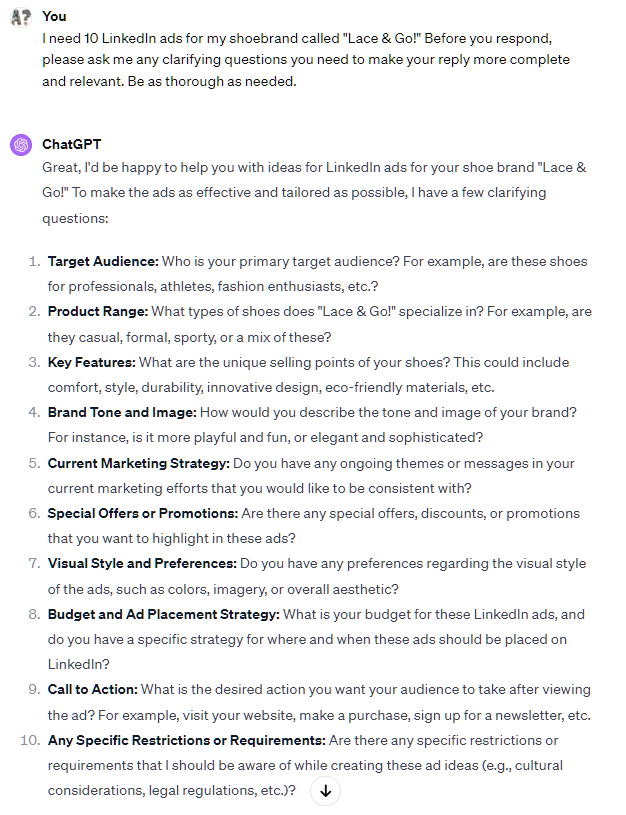
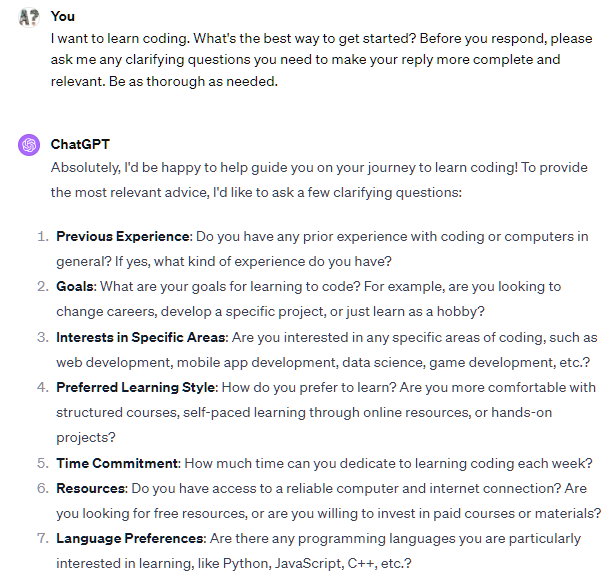
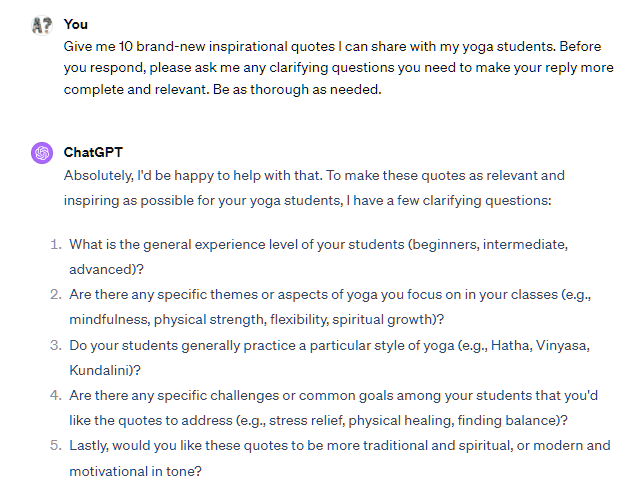

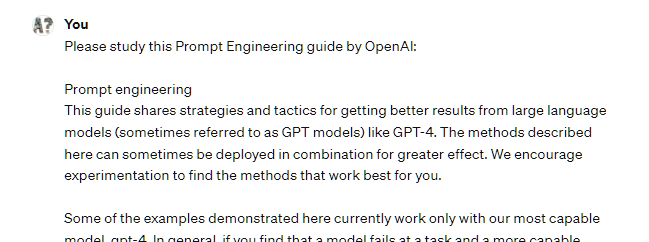
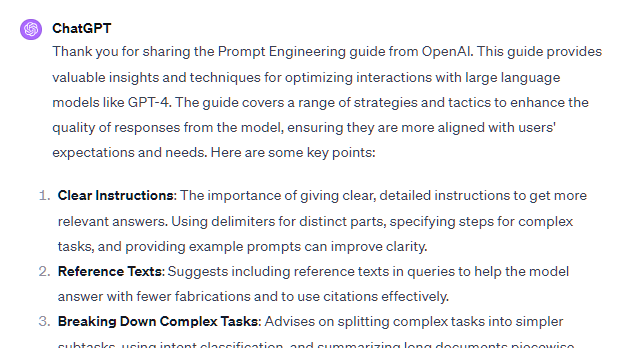
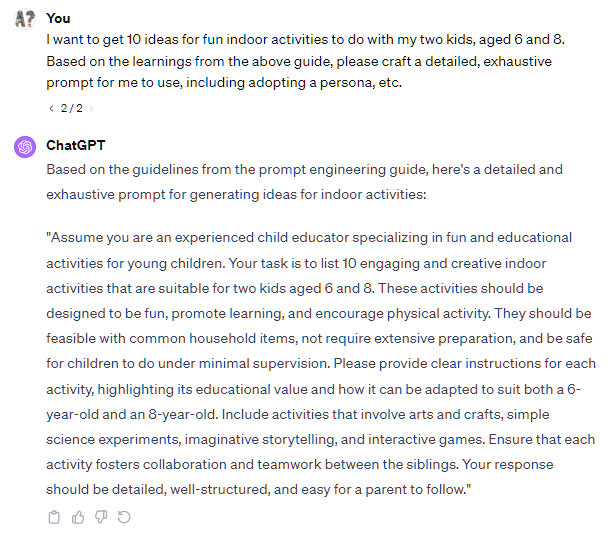
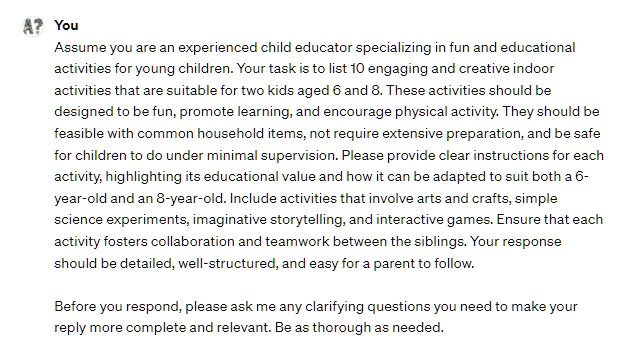
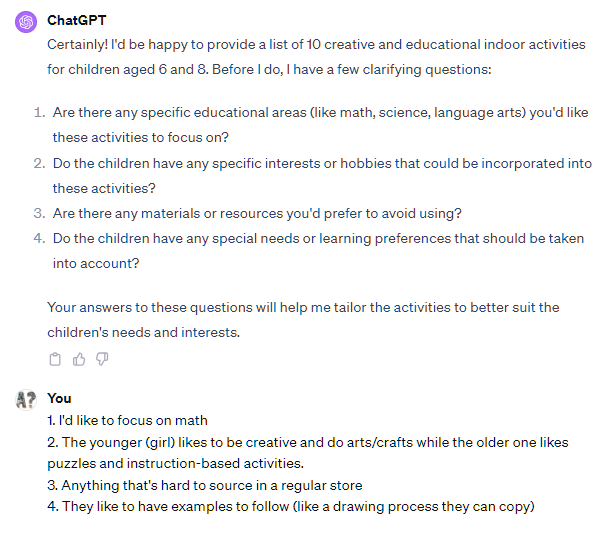
Just echoing the others. Good stuff. I realized this is what I was doing just by trial and error, but you actually documented it! Lol
Great issue! The prompting guide is super helpful. I also like to try my prompt in different models, Bard is always creative.